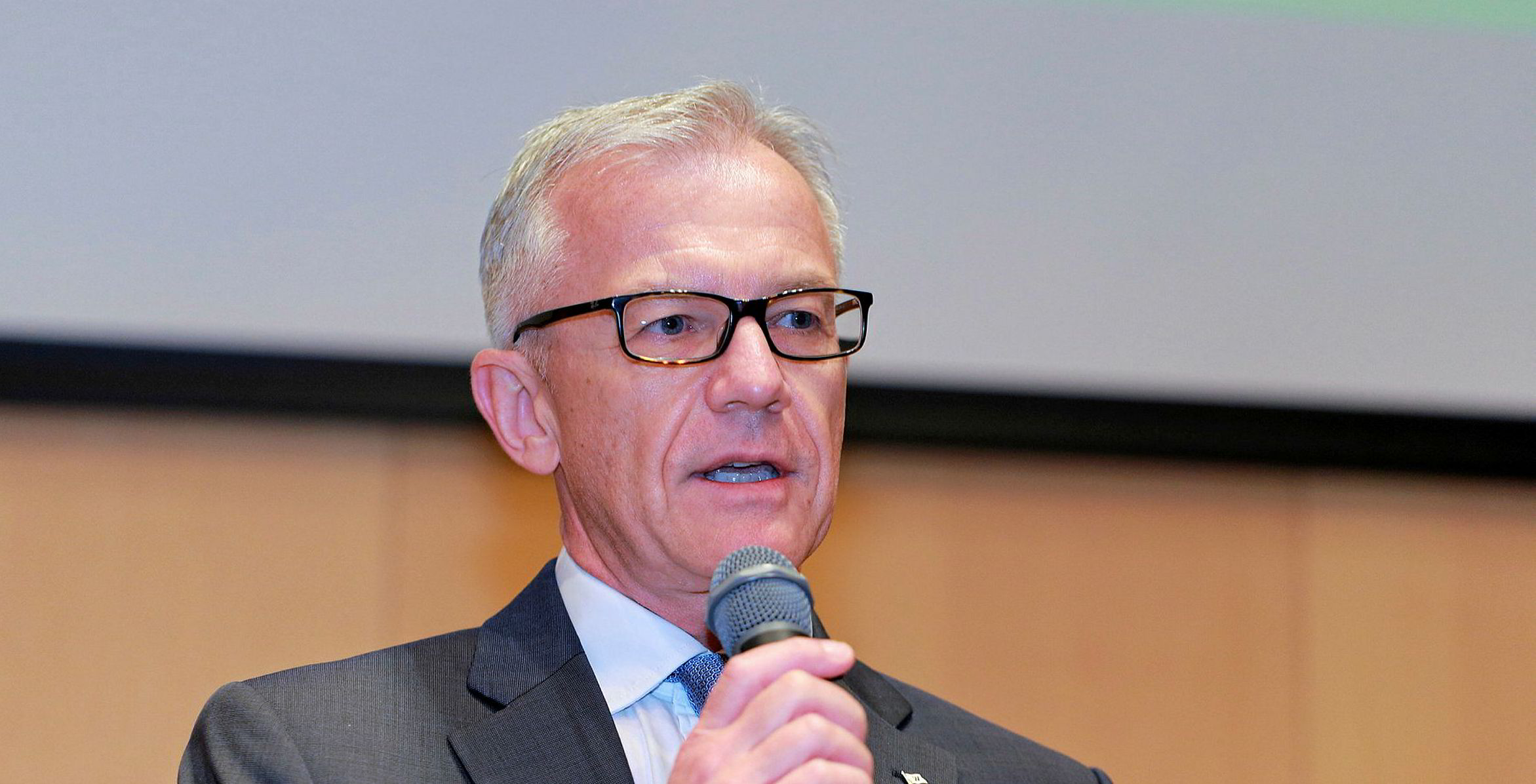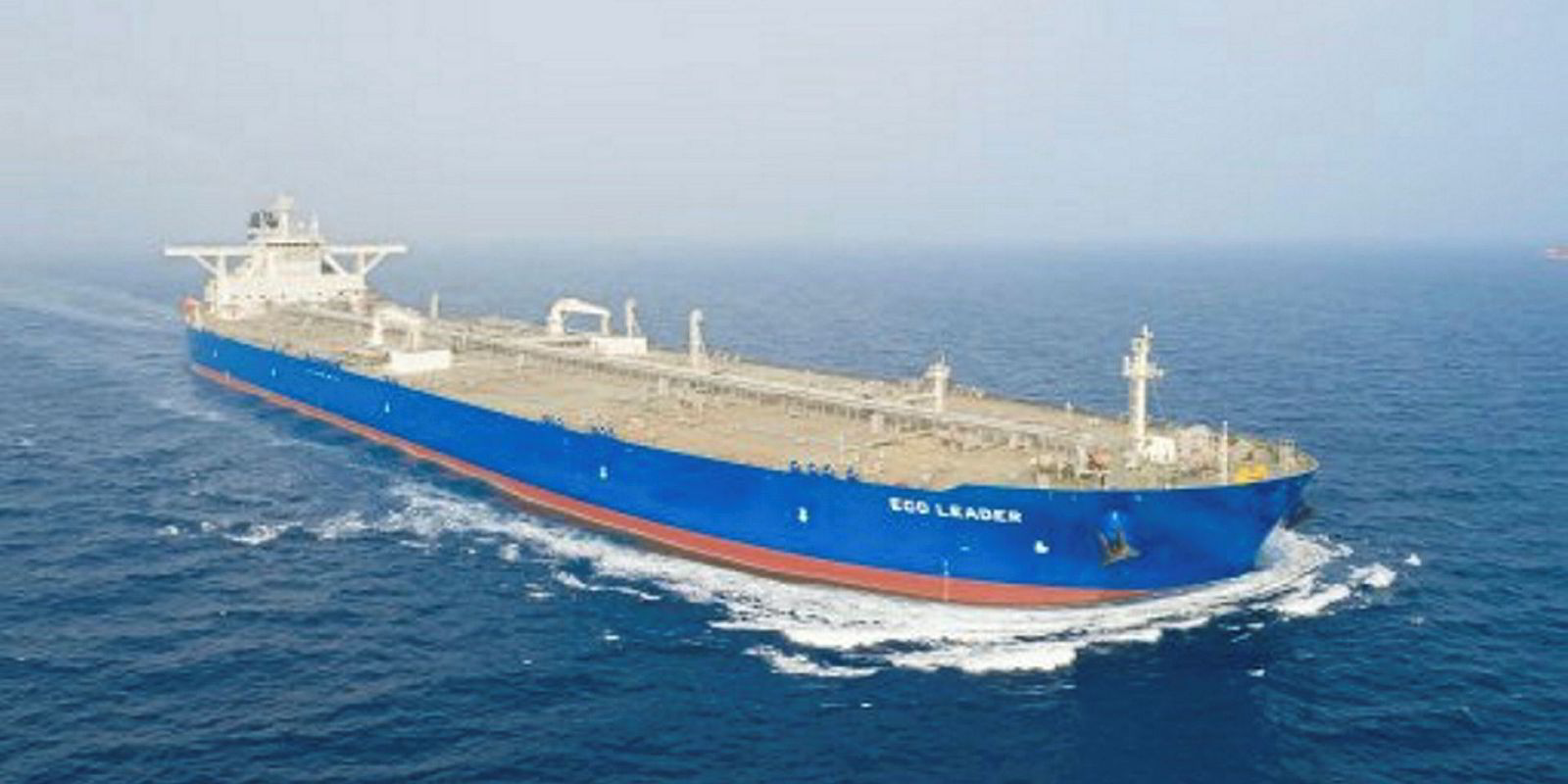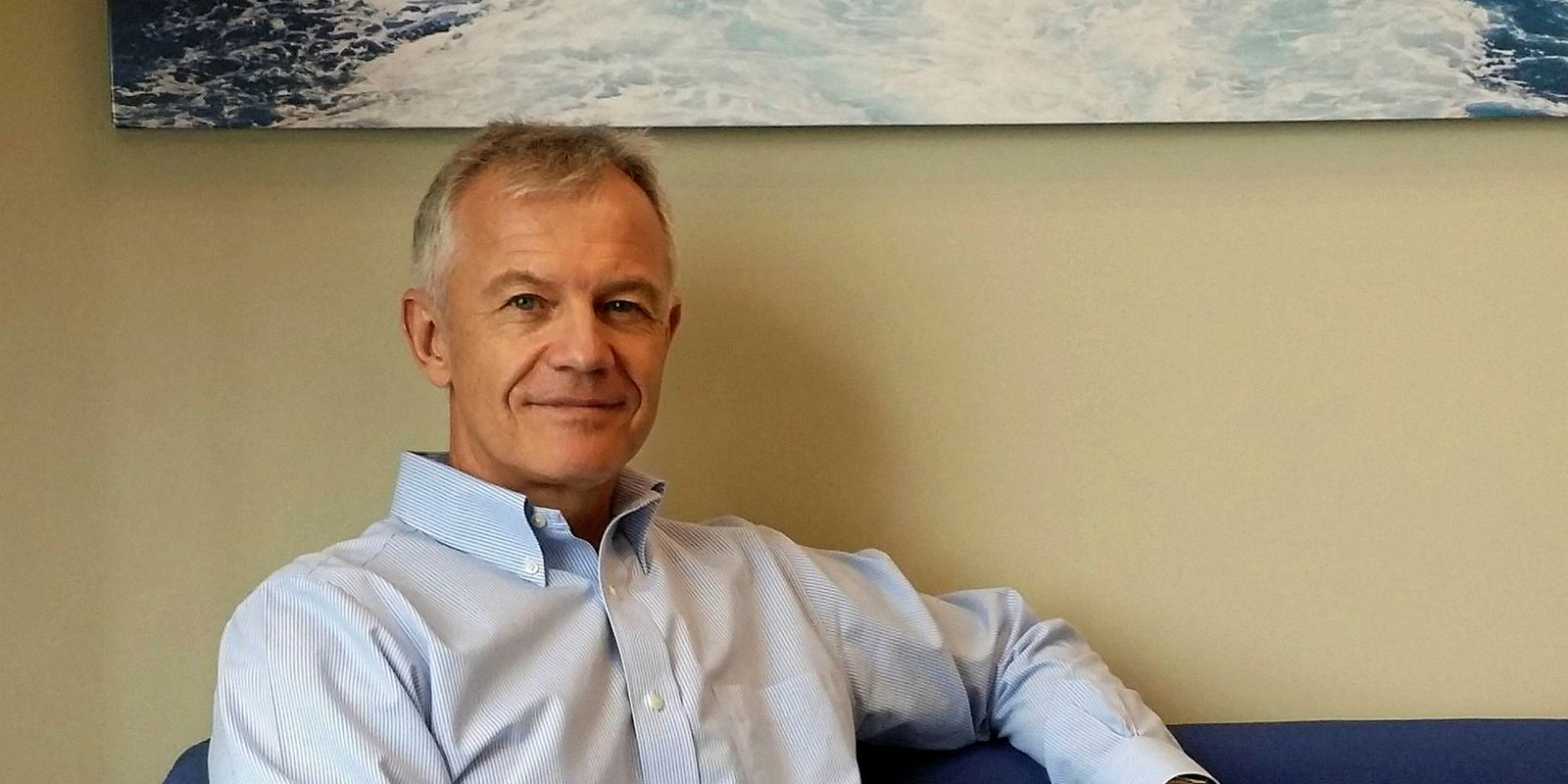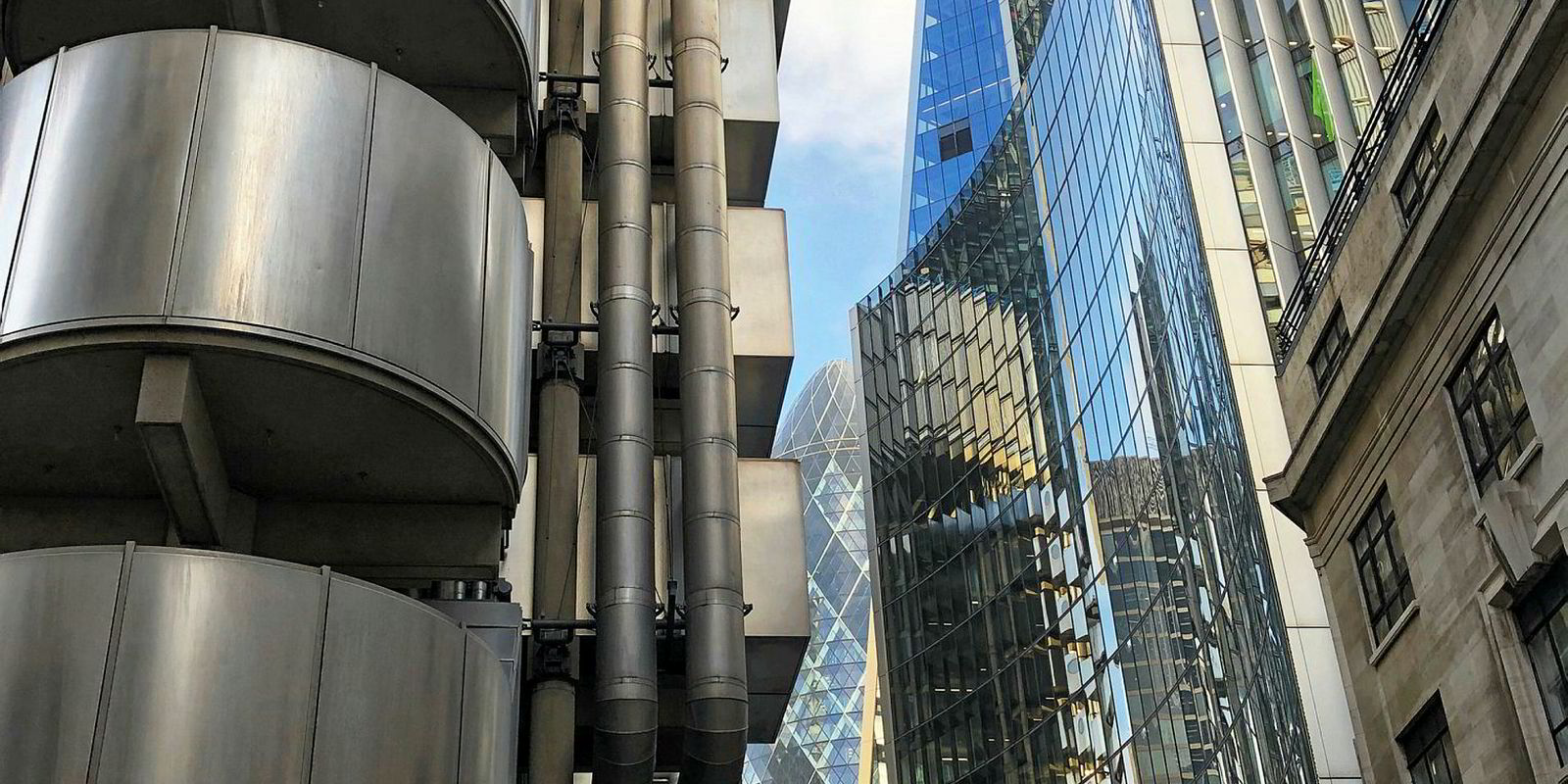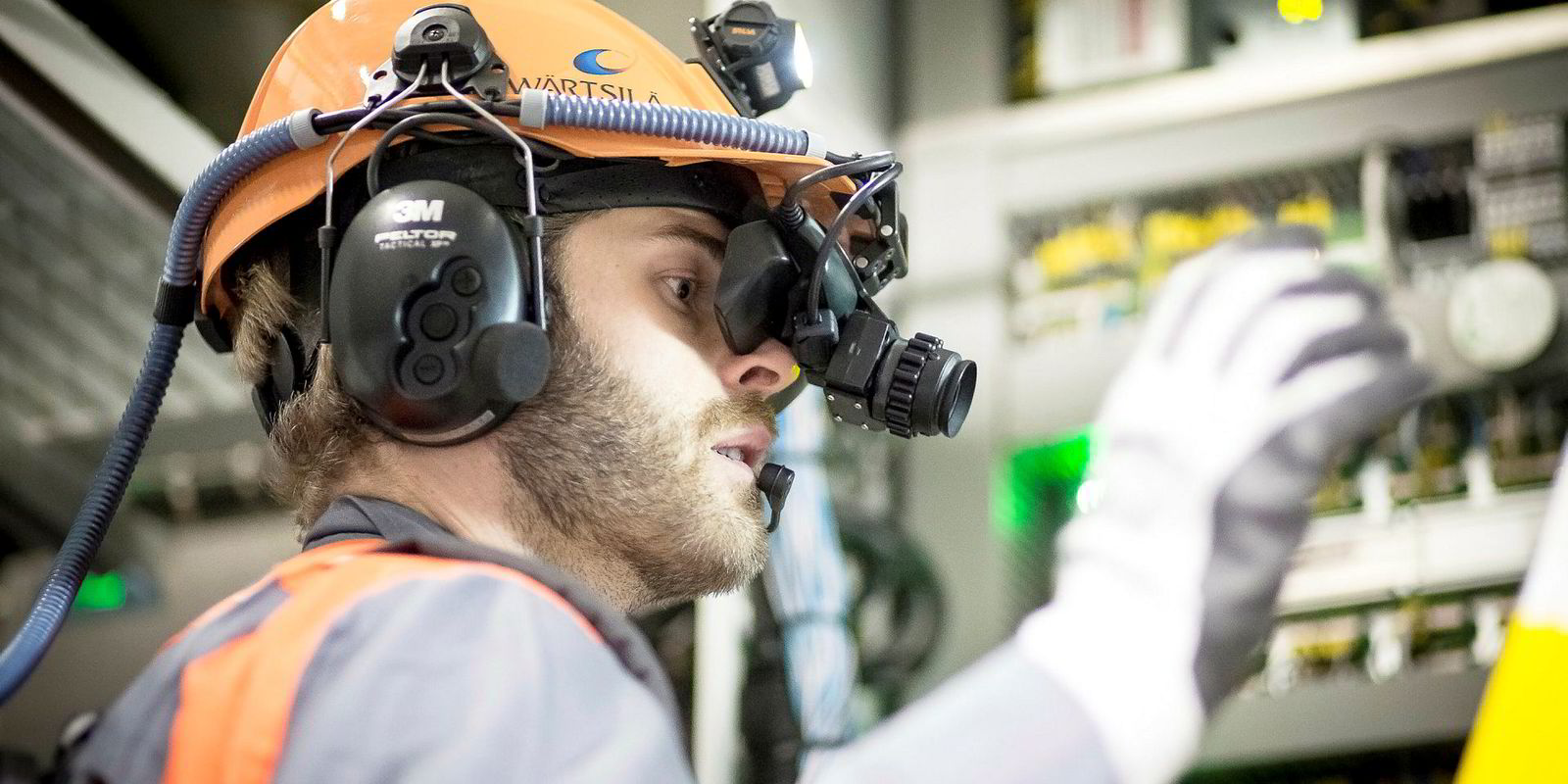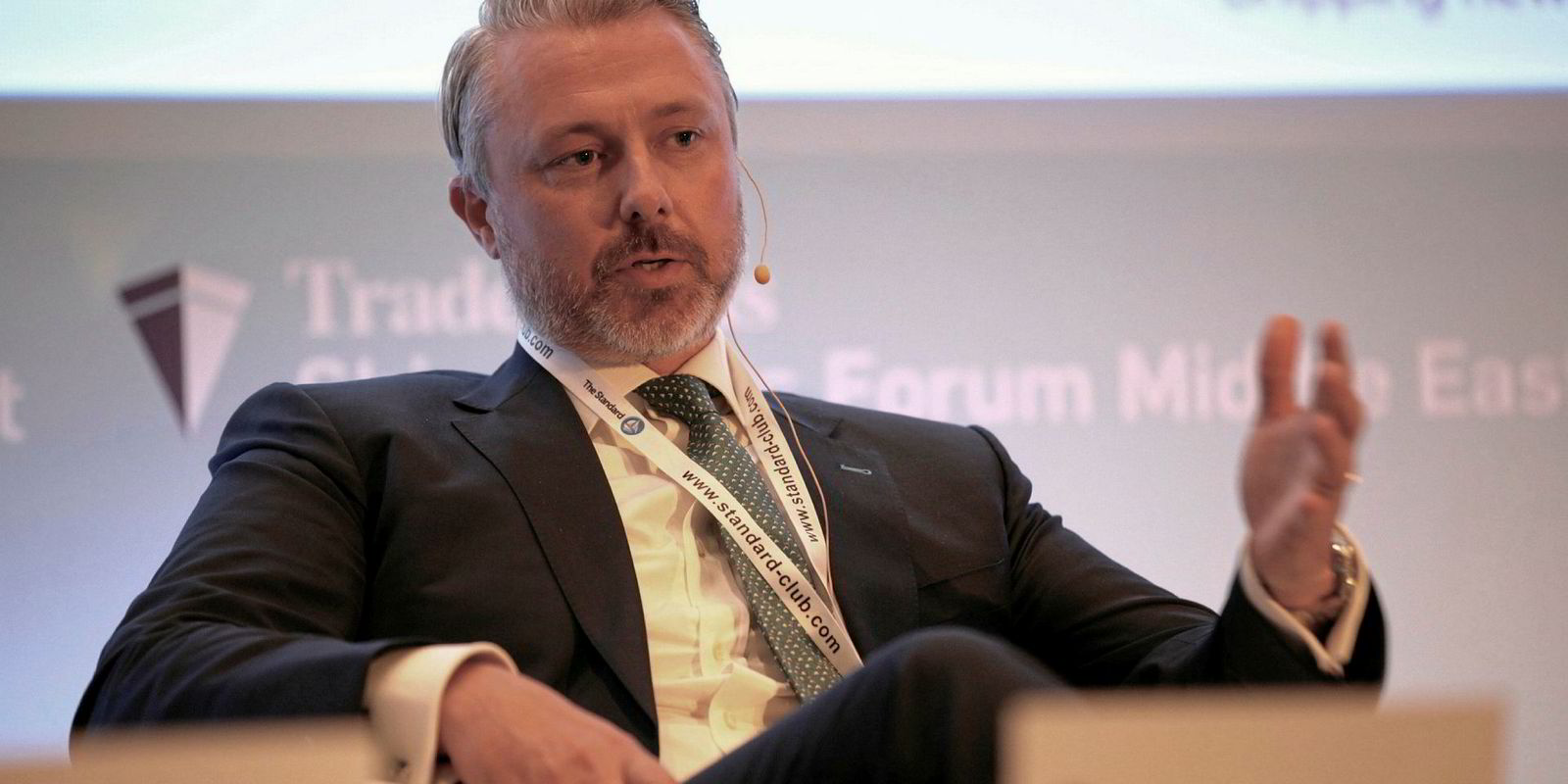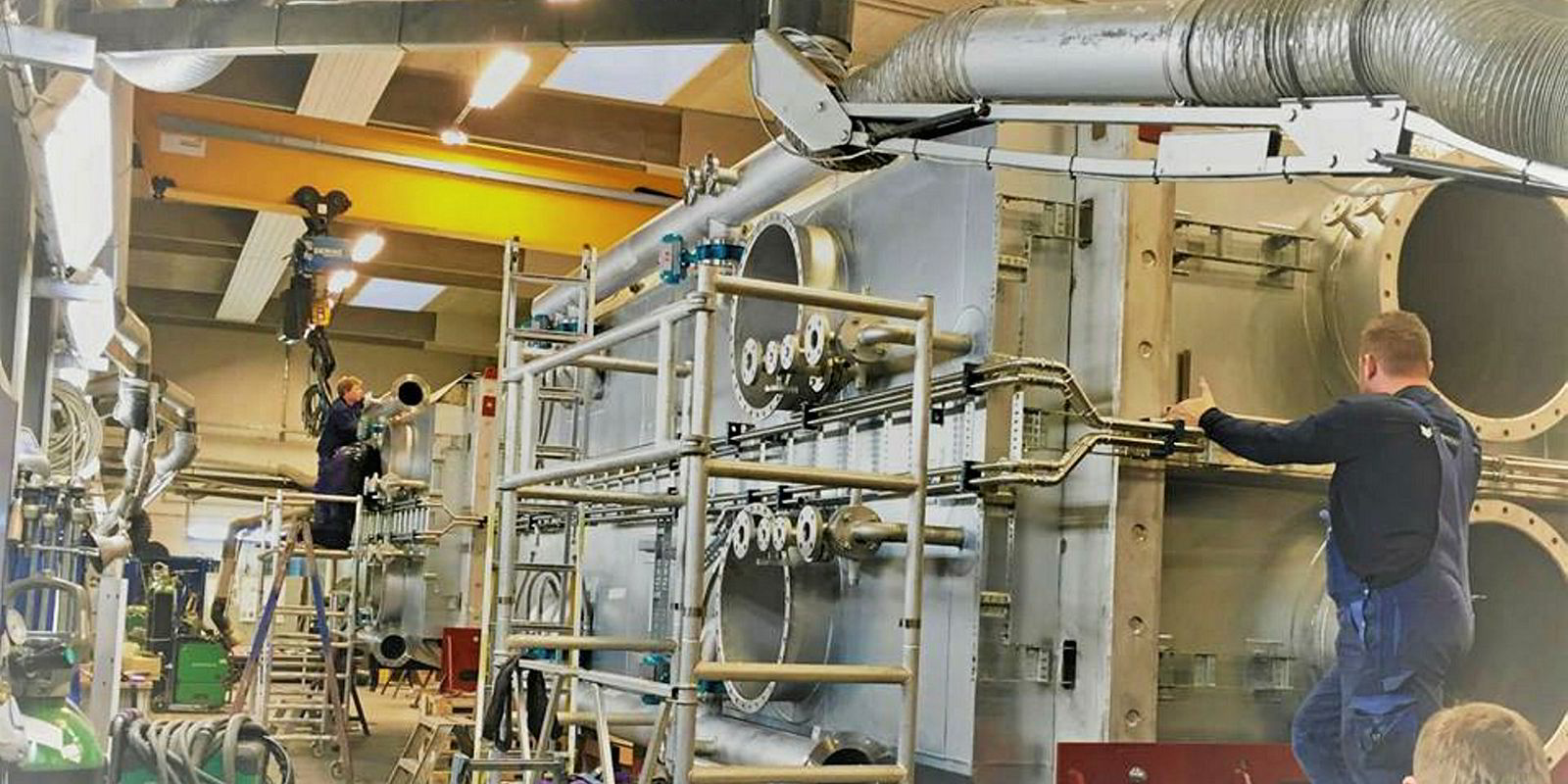The year ahead has potential to deliver an upside for providers of services to shipping. After all, so significant a change as the IMO emissions rules will require strong advice, and shipmanagers and other service providers are aiming to provide it.
But the sulphur cap also presents difficulties. The new rules present uncertainty over enforcement and further regulation, higher costs and the need to find finance, as executives explain in TradeWinds annual survey of industry experts on their outlook of the year ahead.
Shipmanagement
Carl Schou
President and chief executive, Wilhelmsen Ship Management
We are managing a number of vessels installed with scrubbers and we do see some challenges when it comes to day-to-day operations. From a scrubber point of view, training and competence of crew may well be a challenge that the industry will face.
For owners choosing compliance fuel, having a good fuel management plan and changes in maintenance and procurement plans can be a challenge. As a whole, I really don’t see any large ‘black holes’ as these are manageable challenges with proper planning and experience.
Preparing for the upcoming rules will be a challenge — both in regards to vessels with scrubbers and those using compliant fuel. One challenge that we have been discussing is if there will be enough critical spare parts available from the main engine suppliers. We anticipate a higher than normal number of main engine breakdowns due to various blends of fuel and, as such, this might become a bottleneck. Formulating a plan to manage these risks is a challenge due to the uncertainty in the entire supply chain now.
We are very optimistic when looking into next year. There are definitely a lot more requests and tenders for management out there, which is reflecting the positive sentiment in a number of segments.
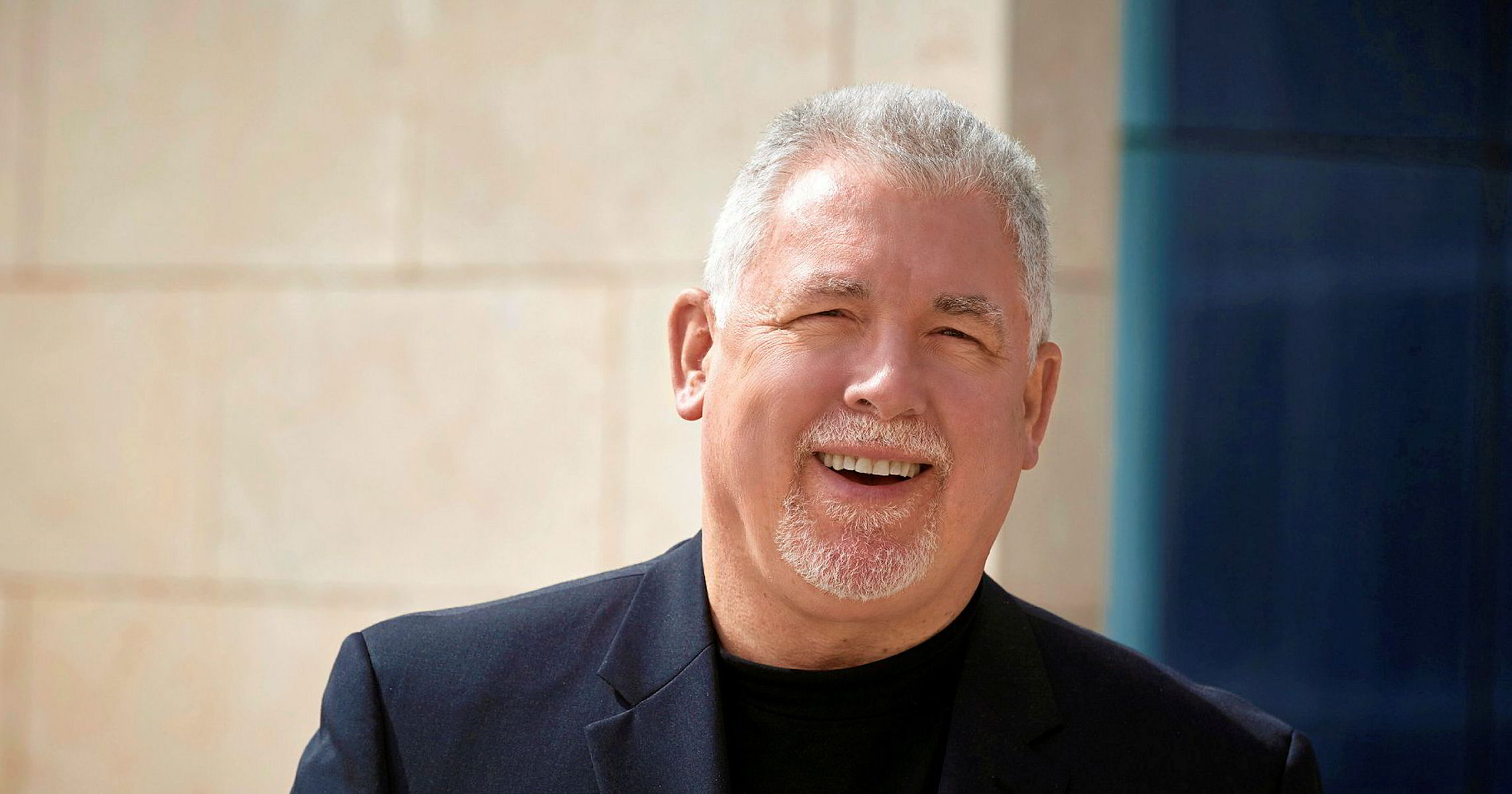
Frank Coles
Chief executive, Wallem Group
The IMO 2020 deadline creates an opportunity for those in the ship-support sector to provide clear and independent advice for owners looking for guidance and feedback on the choices available.
The increased pressures in the environmental, regulatory and efficiency fields means that specialist advice from outside the owner’s organisation is likely to be better informed and focused on the specific issues. This leaves the owner’s organisation better equipped to make the necessary commercial decisions.
One of the biggest challenges will lie in the ability to support those owners who choose to install scrubbers and getting them installed in time. Unfortunately, with the increased pressures on where scrubbers can be used, the opaqueness of the costs of running scrubbers and the availability of alternative fuels, both owners and technical support consultants are left scrambling to find the truth in a mire of fake data.
The shipmanagement and technical support services business should perform well in the coming year. The scale of technological change, environmental pressures and regulatory drivers create a perfect storm of uncertainty for owners. The third-party perspective and support from outside the owners is more likely to provide a specialist independent focus across all the issues.
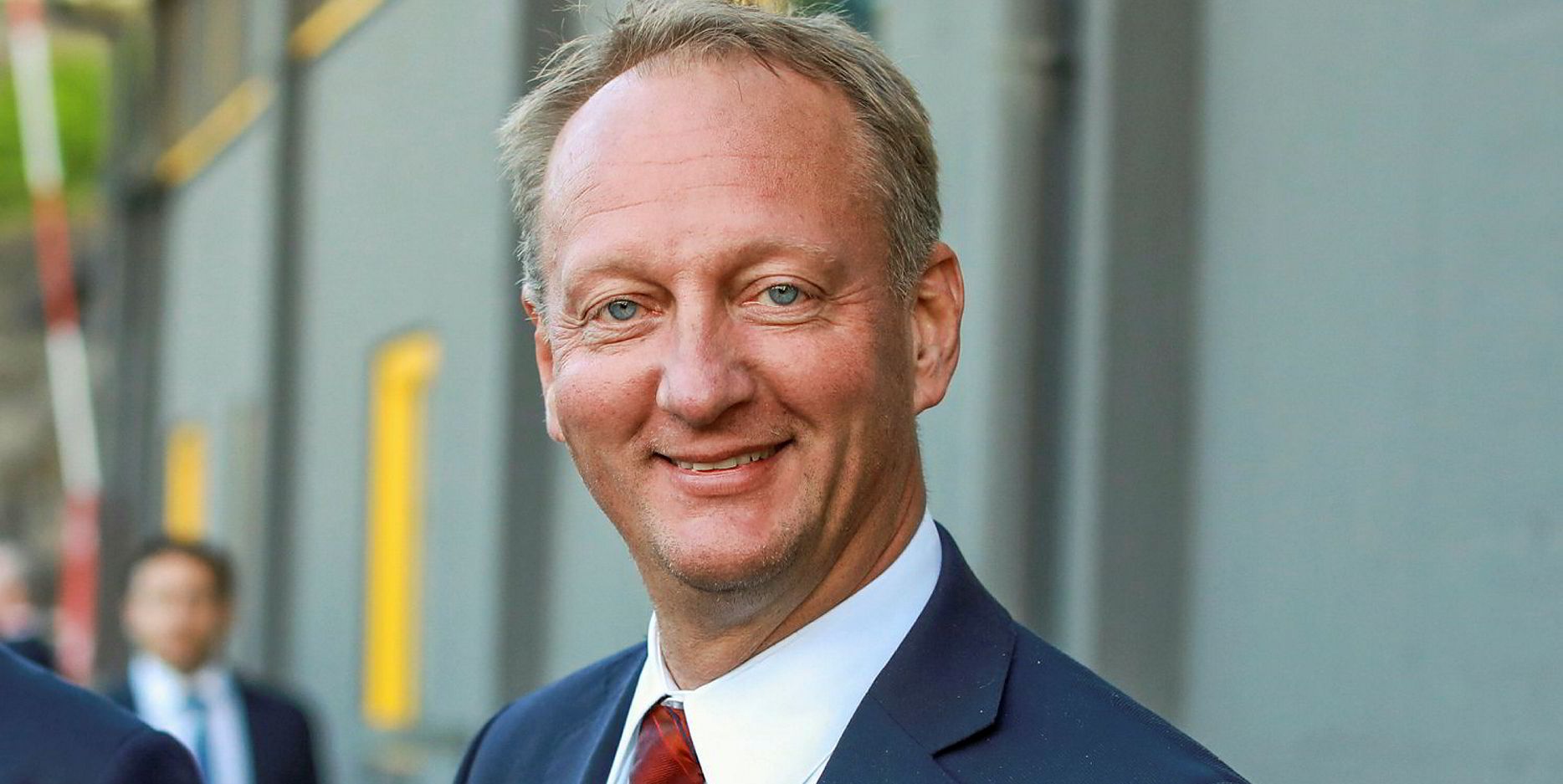
Geir Sekkesaeter
Chief executive, OSM Maritime Group
On the subject of emissions, scrubbers need people to operate them, so training is a challenge and will be an extra complexity for shipmanagers.
We have been operating scrubbers on tankers in the North Sea for a couple of years. They are not a long-term solution but have potential upside for a period. It is a bet on the spread between heavy fuel oil and compliant fuel, and whether it justifies the investment.
Scrubbers have potential maintenance cycle consequences for managers but only a relatively low number are expected to be in operation by 2020 — between 1,500 and 2,000.
A lot of ports will have compliant fuel, whereas heavy fuel oil may not be available given the inferior income for producers.
There will be issues relating to fuel distribution and logistics in ports. Also, lube oil is a potential concern because you don’t use the same for all types of fuel. But the industry has a habit of resolving such issues.
Looking to 2019 and the years ahead, the greater complexity of shipping, including digitalisation and the need for transparency — with owners getting access to read type data — will drive smaller owners to outsource to third-party managers.The traditional model of shipmanagement companies providing access to people and shared services will change, and be more about competence.
P&I

Paul Jennings
Chairman, International Group / chief executive, North P&I Club
The group has been monitoring the debate and discussions within the IMO relating to the 2020 sulphur cap and the implementation of the European Union sulphur directive (2016) 0.5% sulphur cap, which will also enter into force on 1 January 2020 in European member state territorial seas and EEZs [exclusive economic zones].
The issues arising in relation to these regulations are principally technical and operational, and have been well argued and addressed by national and international shipowner associations amongst other stakeholders.
The group has been following developments and shares the concerns within the shipping industry regarding the risk of machinery failure and vessel immobilisation arising from fuel-related problems, which could potentially result in protection and indemnity liabilities, and welcomes the initiative announced by the IMO Maritime Safety Committee at its meeting in December 2018 to pursue the development of 'further measures' to address the risks and enhance safety of ships related to the use of fuel oil in the run-up to the implementation of the sulphur cap in 2020.
Finance
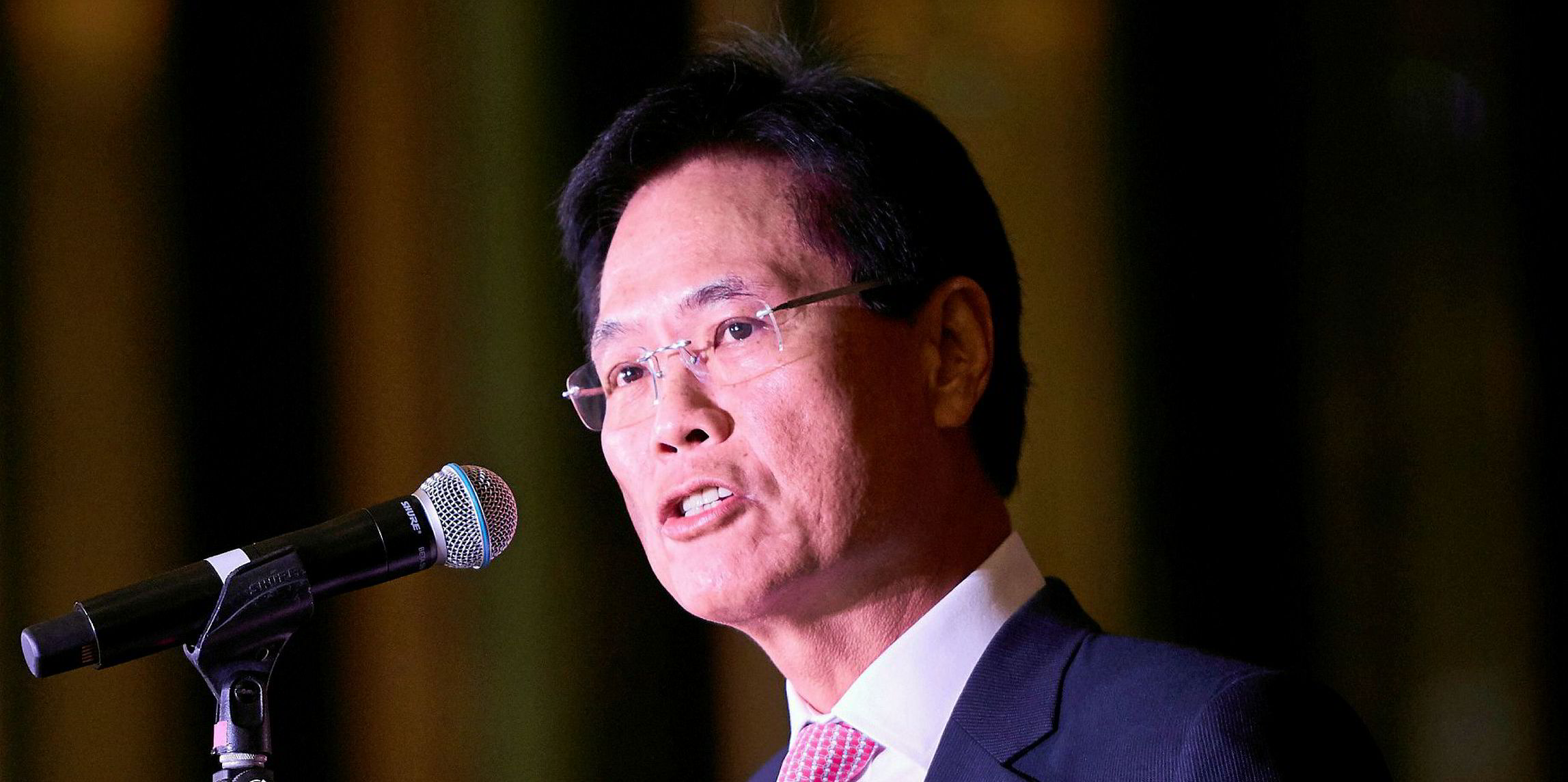
Mick Aw
Senior partner and head of corporate finance, Moore Stephens (Singapore)
Words used to describe IMO 2020 include ‘chaos’, ‘confusion’, ‘shock’ and ‘disastrous’. In our view, the main impact and challenges are cost and uncertainty. Based on our studies of ship operating costs, IMO 2020 will result in higher costs for shipping, regardless of whether compliance is achieved by installing scrubbers, switching to low-sulphur fuel, scrapping ships or doing nothing, thereby risking penalties.
IMO 2020 has created much uncertainty. First, regulatory uncertainty. Singapore’s arguably unexpected decision to ban open-loop scrubbers is a case in point. Also, while the IMO has repeatedly emphasised ‘no delay’ to IMO 2020, US President Donald Trump’s reported push to delay it suggests this is far from impossible. Additionally, future emissions regulations can change the cost-benefit picture on each compliance option. Second, there is uncertainty over the ability to comply. It is already clear that there is insufficient shipyard capacity to fit scrubbers on the entire commercial fleet. In addition, the availability of low-sulphur fuel in 2020 is also a question.
Shipping, in general, will continue to recover, although some sectors will perform better. The tanker industry will continue to struggle, but the IMO 2020 deadline may improve tanker demand through increased refinery utilisation to meet the low-sulphur fuel demand. Oversupply remains the watchword impacting shipping.
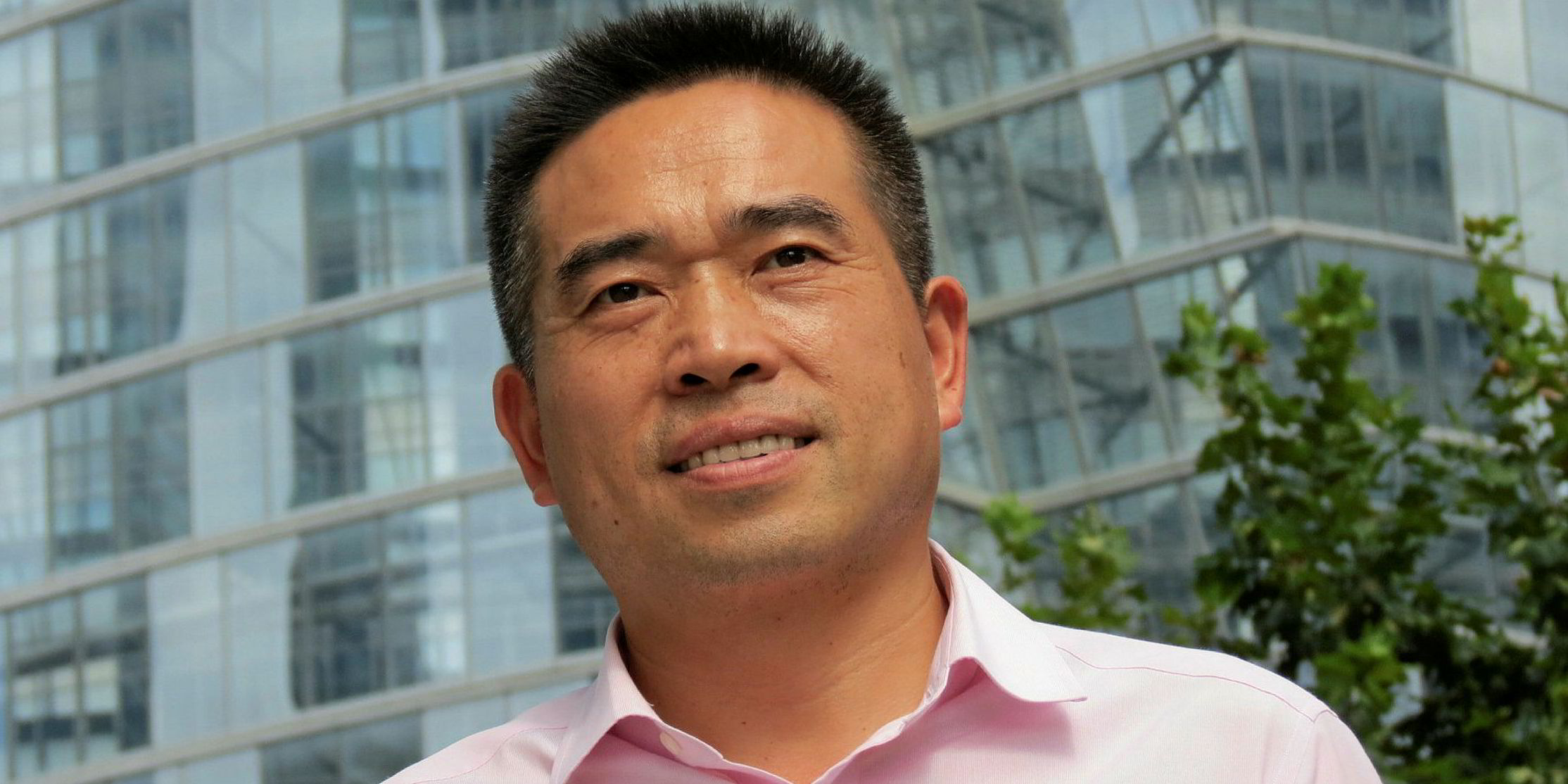
Fang Xiuzhi
Head of shipping finance, Bank of Communications Financial Leasing
IMO 2020 regulations will increase the cost to the shipping industry, but the costs will eventually be passed onto the end user. Meanwhile, because of the high price of fuel oil (low-sulphur oil), shipping companies will slow down ships' speed to reduce fuel consumption. That will help to reduce the supply of shipping capacity, which will be good news for the whole shipping market.
During 2019, IMO 2020 regulations will bring great challenges not to us but to our clients. It will be difficult to make the decision whether the scrubber should be installed. Besides the questions of technical feasibility an economical efficiency, a lot of money is needed, especially for a big fleet, and also the dock capacity for installing scrubbers will be very tight, which means the cost will be higher than expected.
We are generally cautious and optimistic about the trends of the shipping market. In particular, we should closely follow the trend of China's economy, which has been an important engine for the development of the shipping market in the past two decades.

Bill Guo (Guo Fangmeng)
Executive director of the shipping finance department, ICBC Leasing
I think in 2019 we will continue to see a lot of uncertainty about IMO 2020 compliance solutions. But, for ship finance, it should be a good year, because many shipping companies may consider restructuring to reduce their leverage, increase equity and improve performance in order to be able to fund the expense of [IMO 2020] compliance.
It will be the year of decisions — scrubbers, low-sulphur fuel, LNG — and, based on the cost difference, in the short term, the solution for most ships will definitely have to be scrubbers. Especially for panamaxes and bigger ships. But owners will be watching for the cost difference to narrow and for oil majors to provide more global LNG-bunkering solutions. And, in the long run, not even LNG will be a good enough solution for the IMO goals for 2050.
On the newbuilding side, the impact of the 2020 emissions deadline came in 2018. In 2018, owners felt it was not time to place newbuilding orders because of uncertainty about technological solutions, while on the financial side, European banks had withdrawn from the market and owners were looking for alternative finance. At the same time, new orders placed by Chinese leasing houses have surprised the market. But I don’t think it should be such a big surprise given the cost of capital in China and the relatively low newbuilding prices.
We expect generally improving markets in 2019 in many sectors and, on the newbuilding side, it will be a good year for ordering products tankers. For dry bulk, it will be a relatively good year. Demand will be generally stable for Chinese imports and, in general, supply and demand will be balanced. Dry bulk fleet growth has happened mostly in VLOCs, with orders placed in 2017 or earlier based on long-term charters — and that has replaced the speculative capesizes and newcastlemaxes that would normally have been ordered to carry the same cargoes. In 2018, I have not seen so many of those orders, partly because it is hard for such owners to get support from financiers.
Regulation
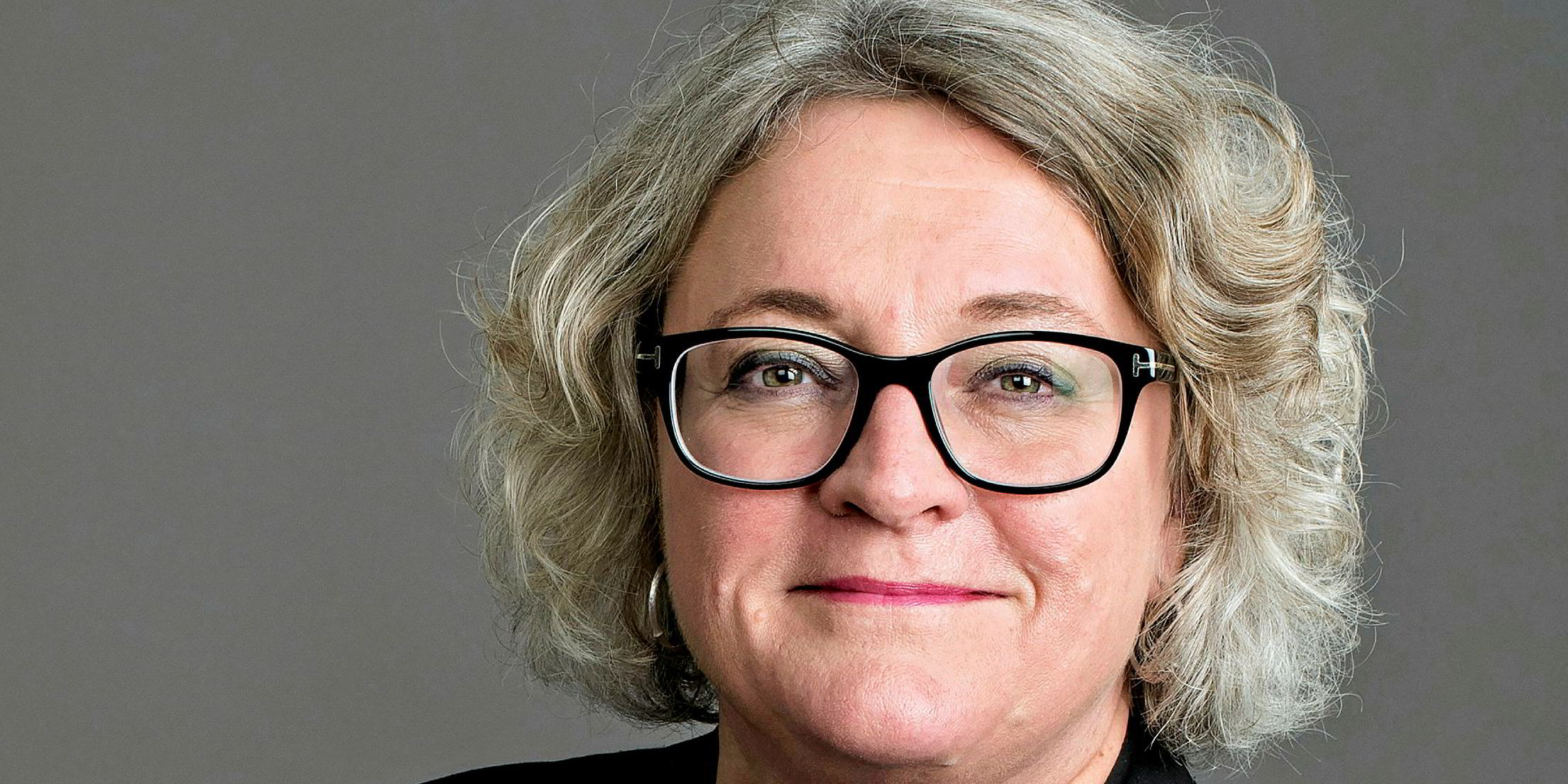
Anne Steffensen
Director general, Danish Shipping
As one of the largest shipping nations in the world, Danish vessels operate to more than 600 different ports. Consequently, it is important in achieving 2020 compliance that efficient enforcement is secured all around the world, based on a global and uniform framework.
Our members are already preparing for the 0.5% sulphur cap deadline by conducting tests and training crew.
We firmly believe shipping companies will meet the deadline well prepared, but we depend on a level playing field being provided by the authorities via proper enforcement.
In the year ahead, Danish Shipping will make every effort to ensure that we remain one of the leading shipping nations. We are currently awaiting European Union approval of an expanded tax exemption scheme for seafarers working on specialist offshore vessels under the Danish International Register of Shipping.
We expect this will make sailing under the Danish flag attractive for offshore companies, and thus strengthen Danish maritime services employment relating to the oil and gas, and offshore wind industries.
Denmark is also increasing its focus on maritime research, education and innovation, positioning it as a global centre of maritime knowledge, as we believe such capabilities will be an increasingly competitive factor in future shipping.
Classification
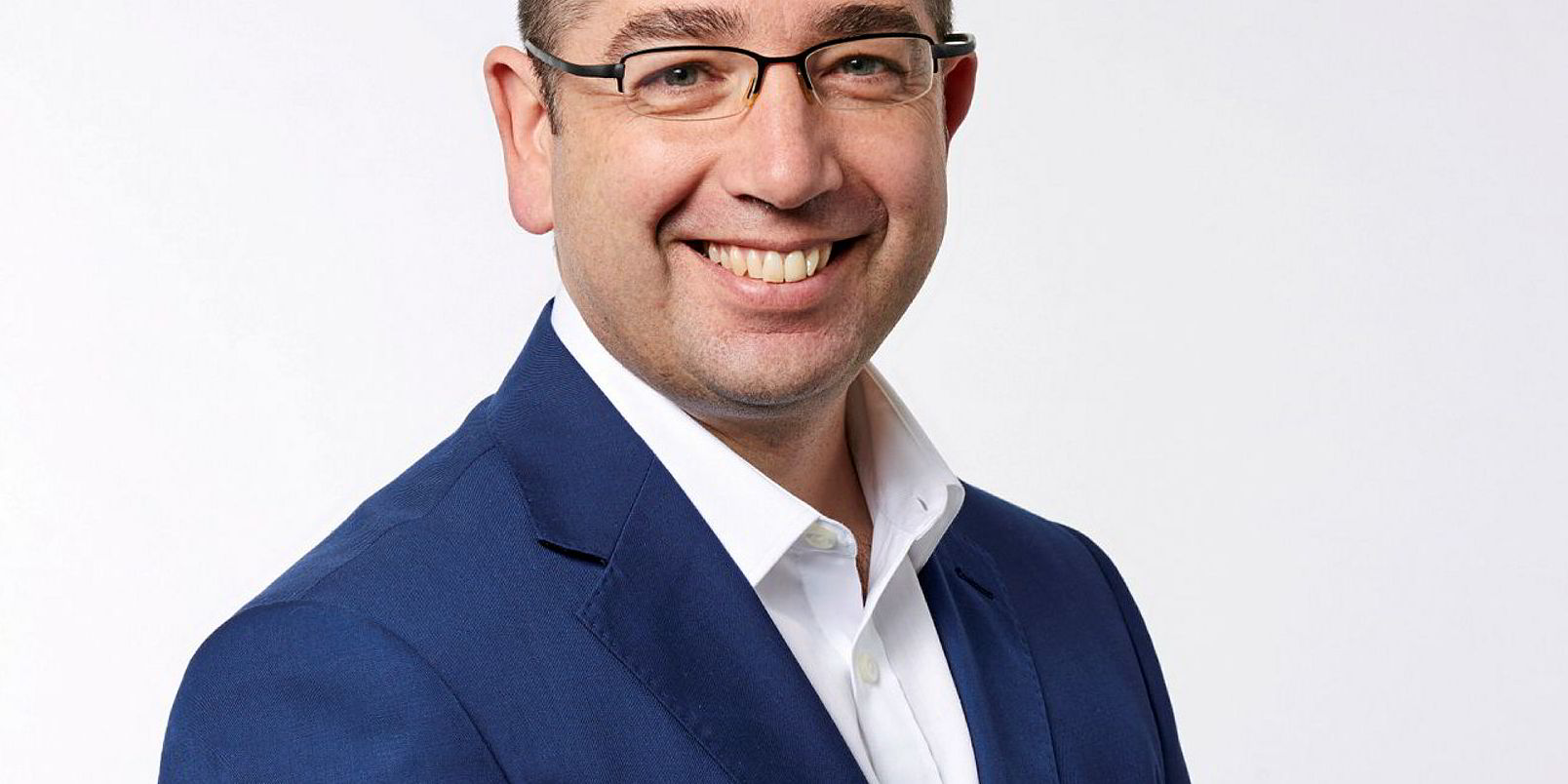
Nick Brown
Marine and offshore director, Lloyd's Register
IMO 2020 will bring both commercial and operational opportunities and risk. Regarding tanker employment and charter rates across ship types, we see likely upsides as vessels are taken out of service for modifications to tank arrangements or scrubber installations. Commercially, there will need to be significant discussions between charterers and tonnage providers.
Compliant fuel will be there. It is just a matter of what you have to pay for it. Straight distillate, blended fuel or a derivative bleed-off from the refining complex will all come at a variable price.
A closely integrated fuel procurement process will also be needed to ensure what is purchased is used correctly onboard given the increased variability of compliant fuel compatibility.
If using scrubbers, fuel buyers should ensure they have long-term contracts in place to secure HSFO [high-sulphur fuel oil] supply. We also recommend a focus on crew training and bunker purchasing department awareness.
Lloyd’s own testing of new fuels, via FOBAS [fuel oil bunker analysis and advisory service] specialists, show reasons to be optimistic and we remain busy today supporting shipowners and managers in the development of their new fuel management plans.
While the challenges posed by the 2020 fuel change are not to be underestimated, the industry can tackle these with a sense of confidence if sufficient planning, preparation, stakeholder engagement and proactive fuel change management is implemented.
Offshore vessels
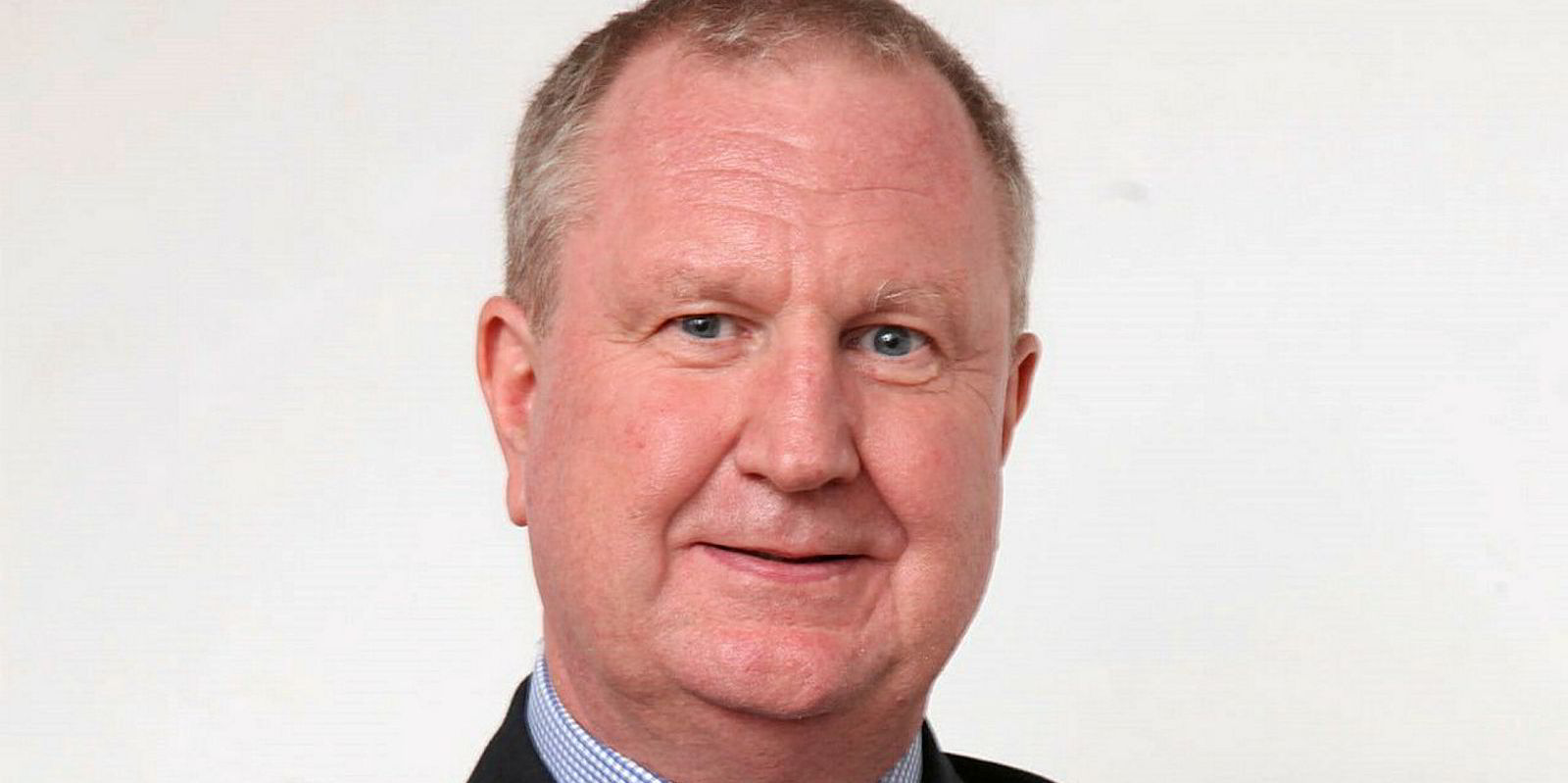
Mike Meade
Chief executive, M3 Marine Group
The offshore sector is dominated by vessels that already burn low-sulphur fuel, mainly gasoil.
The only challenge we in the offshore space will see will be price impact as nobody yet understands the pricing implications based on the increased demand of low-sulphur fuel in 2020 and how the supply chain will be effected.
However, in the majority of offshore contracts [OSV and rigs], the ‘fuel’ is also invariably supplied by the charterer.
The offshore sector — especially the OSV sector — is plagued by too much equipment in the market coupled with a huge debt burden. It will take years for this to clear out. A relatively stable oil price — despite recent November and December volatility — has brought about positive sentiment, which helps a little.
Charter rates will remain low, equipment utilisation will continue to improve but most, apart from those fortunate to have been restructured like Tidewater, will have income and balance-sheet constraints that will not allow them to be profitable any time soon. Opex+ has become the mantra of the industry and debt service remains a problem going forward.
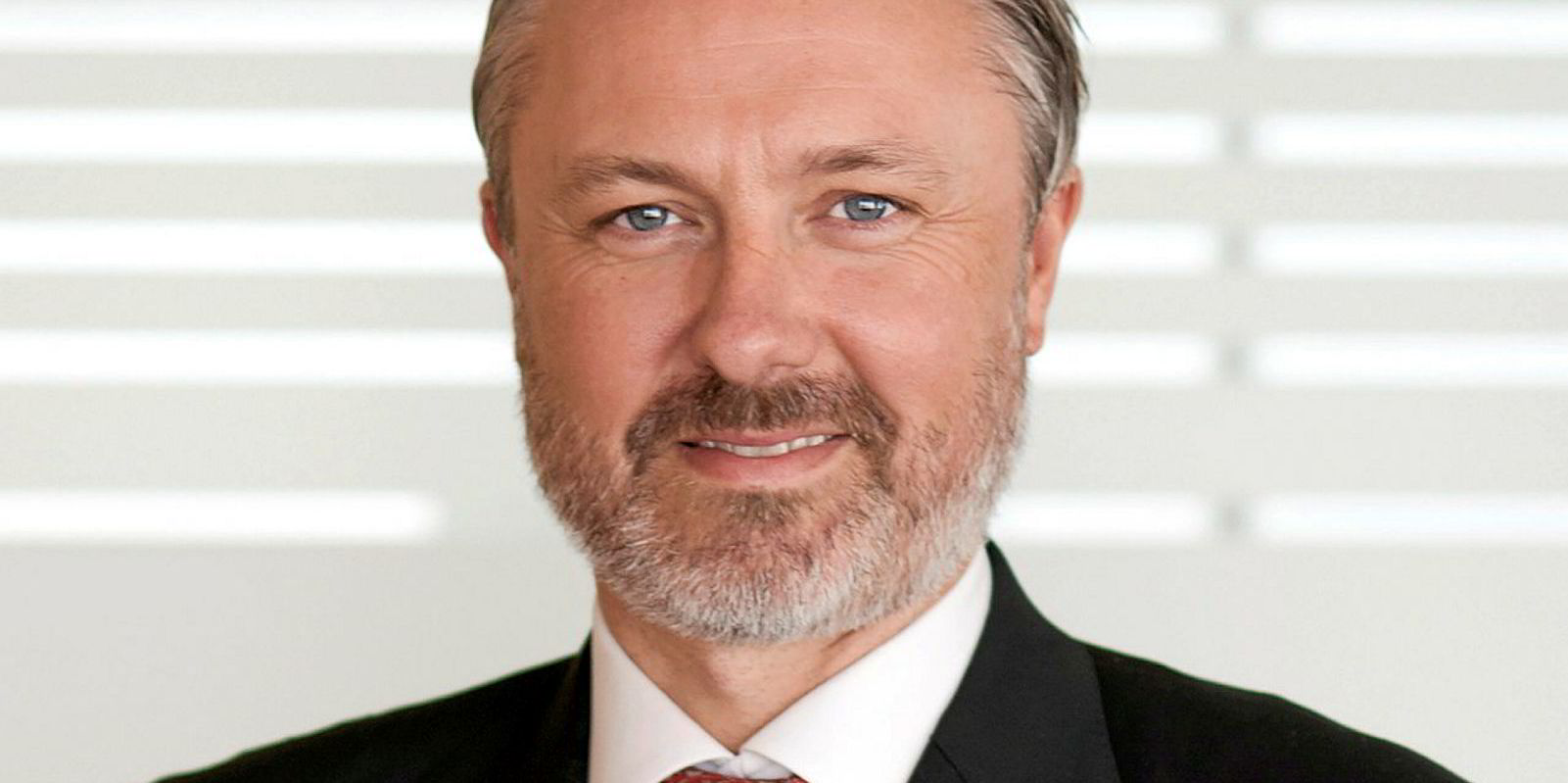
Rene Kofod-Olsen
Chief executive, Topaz Energy and Marine
We are always seeking to ensure that our vessels are at the lowest emissions levels possible. The new vessels that we have recently added to our fleet — the PSVs Topaz Endurance and Topaz Energy, the AHTS vessels Topaz Master and Topaz Mariner, the subsea vessels Topaz Tiamat and Topaz Tangaroa, along with all 20 new vessels for the Tengizchevroil contract — are diesel-electric, which leads to a significant emissions benefit.
Our vessels are generally running on fuel supplied by our clients, and we have high standards for what we accept onboard our vessels. Our sulphur limits are already well within the new IMO standards coming into place in 2020 and, as a result, we expect a limited direct impact from the IMO deadline.
Because we are already operating on fuel that is well within the new standards, we will not be directly impacted as the industry prepares for IMO 2020. However, the new regulation will cause the cost of marine gasoil to go up as demand increases, which in turn will heighten the demand for more efficient vessels. Having clean and efficient vessels, we are in a good position to compete in this scenario, and we continue to optimise our fuel consumption in order to keep fuel costs as low as possible for our customers.
If you believe that there will be a demand for oil and gas going forward, as I do, there will be opportunities for the OSV sector. We foresee a rise in exploration and development, accompanied by a increase in maintenance requirements, which all leads to more activity in our sector. We are already seeing markets improve slowly as capex and opex spend by the oil majors is showing positive signs, and we expect this momentum to continue picking up into 2019 and 2020, which could be quite transformational years for the sector.
On the supply side, we believe many observers are mis-stating the OSV supply. With about one-third of the global OSV fleet remaining in layup, and with about half of these vessels being more than 30 years old, it’s our expectation that most of the stacked vessels will never return to active service, which will balance supply and demand much more than it looks on the surface.
Passengerships

Bill Burke
Chief maritime officer, Carnival Corp
The cruise industry works to ensure that we remain in full compliance with environmental standards put in place by multiple regulatory bodies, including the IMO, everywhere we visit. This is why we are investing in innovative solutions to meet the IMO 2020 deadline and sailing with MGO [marine gasoil] where required.
Carnival Corp has a deep commitment to operating responsibly, as our very existence is tied to protecting the oceans, seas and communities that our ships visit. We have been developing and implementing a number of industry-leading solutions across our fleet to meet, and in some cases exceed, the new standards, and we are well on track to meet the upcoming deadline.
We have led the industry in the development of new clean cruising technologies, including our advanced air quality systems [or scrubbers], and pioneered the use of LNG and shore power for cruiseships.
Most cruise operators like ourselves have already been investing in a number of proven innovations over the past several years to support positive environmental initiatives. But there continues to be misinformation around the benefits and impacts of technologies such as scrubbers, so the cruise industry will continue to educate the public and set the record straight against inaccurate information.
According to several studies, scrubbers on ships using HSFO [high-sulphur fuel oil] remove more than 98% of sulphur oxides from exhausts, resulting in cleaner emissions than those of MGO, and our water emissions have no negative environmental impacts. In fact, our water emissions studies are classification-society endorsed and meet international standards including the IMO standard for wash water.
The cruise industry is expecting to see growth next year with new ships and new destinations as more people discover the exceptional experience and value of cruising. CLIA [Cruise Lines International Association] is seeing record global cruise passengers for 2018, and all indications are that the industry will continue to grow next year and beyond. The cruise industry is under-penetrated in every market, so we will continue to see significant opportunities.
As a result, we remain optimistic about the future of cruising. On top of three straight years of strong financial performance, we have made great strides in the guest experience and our environmental initiatives.
